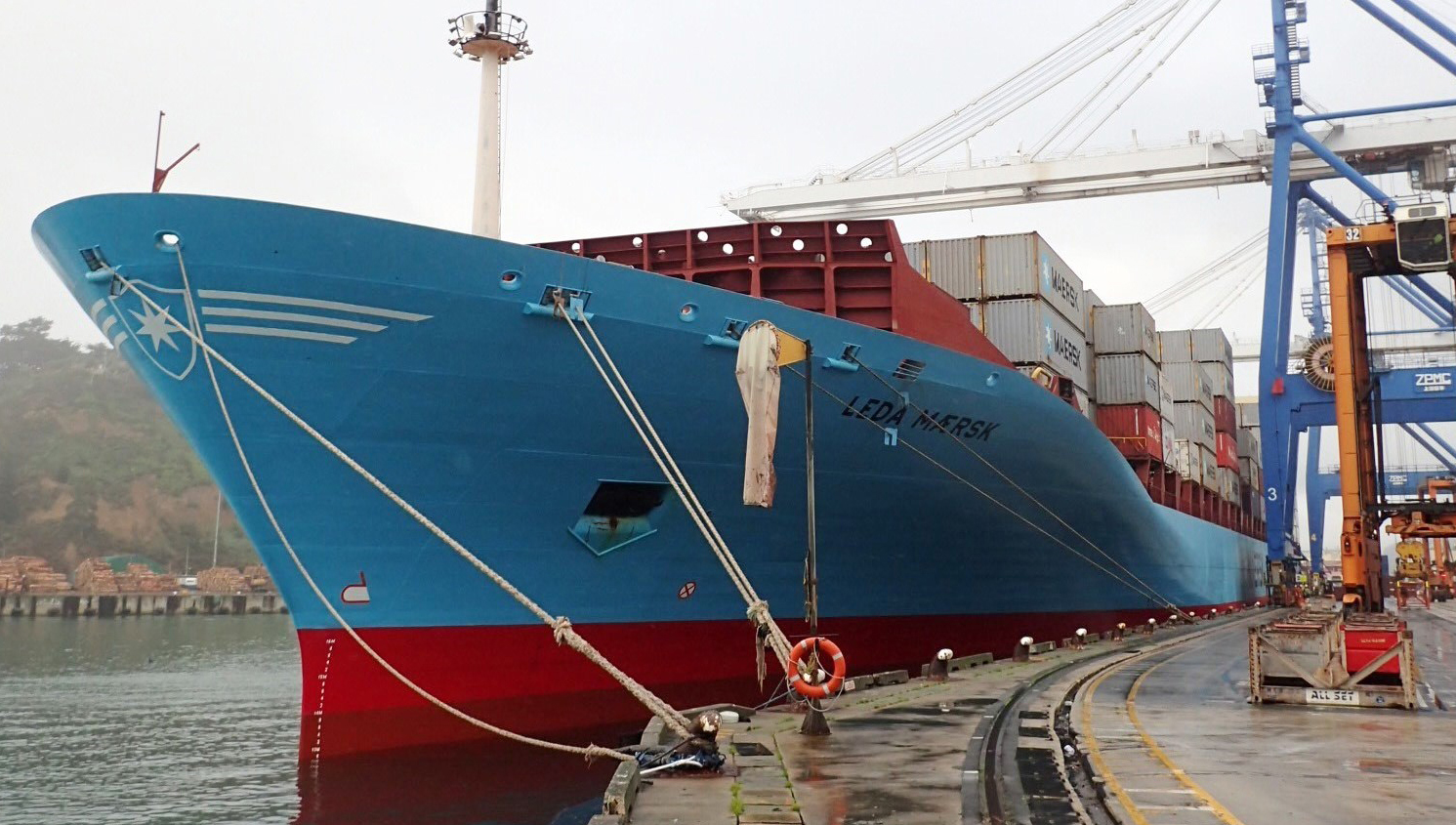Maersk navigational safety review urged as accident investigation flags dangers of relying on visual cues over electronic aids
25 October 2019

Maersk Line has been urged to review navigational and pilotage safety across its fleet following an accident last year in which one of its vessels ran aground while entering a port in New Zealand.
An investigation into the incident involving the Danish-flagged Leda Maersk in June last year found that neither the Otago harbour pilot nor the ship’s bridge team had recognised that the 50,688gt vessel had deviated from its planned track as it rounded the final bend in the channel before its berth.
'This was because they were all primarily navigating using visual cues outside the ship, rather than fully using the electronic navigation aids, all of which clearly showed the ship deviating from the centre of the channel,' the NZ Transport Accident Investigation Commission (TAIC) report concludes.
'The grounding is an example of why it is not appropriate to use visual navigation alone when manoeuvring large ships in narrow channels, and in the dark,' it adds. 'With so little margin for error, it would have been appropriate to utilise fully the accuracy of electronic navigation aids such as portable pilot units (PPUs) and ECDIS. Had the pilot done so, the ship's departure from the intended track would have been readily apparent in time to avoid the grounding.'
Investigators said the pilot had stopped using his PPU when he realised it was showing the ship to be off-track because there was an 18m offset to allow for the position of unit's aerial in relation to the vessel's centreline.
They found that an ECDIS off-track alert had been activated before the grounding, and acknowledged by one of the bridge team, but the information had not been shared with the rest of the team.
'The fact that none of the bridge team was actively monitoring the progress of the ship on the electronic navigation equipment is indicative of their having relaxed when the pilot embarked and put too much faith in the pilot getting it right,' the report states.
The TAIC said the Leda Maersk incident shared similarities with four reports it had published in the past five years involving groundings that were all due in part to poor standards of bridge resource management and pilots and bridge teams not sharing the same concepts of the passage plans.
Investigators discovered that the passage plan on the pilot's PPU was slightly different from that on the ship's ECDIS. Although this was not a factor in the grounding, the report stresses: 'If there is no agreed plan there is a danger that the pilot and the ship's crew will have differing mental concepts of how the pilotage will be performed.'
The report points to evidence that those on the bridge were not working as a team. 'The ship was at a critical phase of the agreed passage plan, yet none of the bridge team was totally aware of the factors influencing the track of the ship towards the left channel bank,' it adds.
An in-house navigational audit carried out onboard Leda Maersk only four months before the grounding had indicated that not all policies and procedures were being adhered to, the TAIC noted.
'This, in combination with the non-adherence to other aspects of the policies and procedures leading up to the grounding, is an indication that the procedural failures may not have been confined to this one accident, and that the operator will need to review the standard of navigation under pilotage for all its crews to ensure that industry good practice is being achieved,' the report adds.
The TAIC also found that Port Otago's policies, procedures and compliance monitoring of pilotage operations had fallen short of good industry standards and in response to the incident the port said it had delivered PPU refresher training to all pilots, and instructed Maersk to change stowage plans to improve visibility on L- Class vessels visiting Port Chalmers.
Tags
